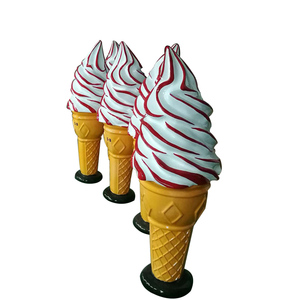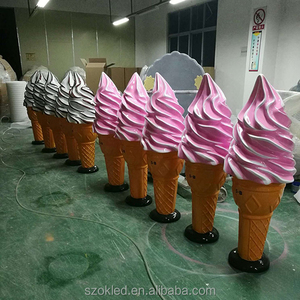
All categories
Featured selections
Trade Assurance
Buyer Central
Help Center
Get the app
Become a supplier

(995 products available)


























The types of FRP dustbin are based on their design and usage. Each type serves a different purpose and meets specific requirements for garbage disposal. The following are some of the commonly used types:
FRP cylindrical bins:
FRP cylindrical bins are the common type of dustbin. They are designed in a cylindrical shape, with the top of the bin usually curved inward. The cylindrical FRP dustbin can be placed in many areas, including parks, streets, schools, and public places. The maintenance of cylindrical FRP dustbins is relatively low because they are corrosion-resistant and easy to clean. They are suitable for all kinds of waste collection.
FRP rectangular bins:
As the name suggests, the shape of the rectangular FRP dustbins is rectangular. They are usually placed in areas where there is a high amount of waste generation. The rectangular FRP bins have large waste-holding capacity and are easy to clean and maintain.
FRP round top bins:
FRP round-top bins are designed in a cylindrical shape with a round top. They are mostly placed in parks, streets, and public places. They are spacious and have a large waste-holding capacity. They are easy to clean and maintain.
FRP square top bins:
Similar to cylindrical FRP bins, FRP square top bins are designed in a square shape. They are mostly placed in public areas. They have a large waste-holding capacity. Cleaning and maintaining square-top FRP bins are easy.
FRP dome top bins:
As the name suggests, FRP dome top bins have a curved top that is dome-shaped. They are designed to keep the waste hidden and reduce odor. They are mostly placed in public areas. They are spacious and have a large capacity for garbage collection. The cleaning and maintenance of dome-top FRP bins are easy.
Shape:
The shape of the FRP dustbins can be circular, square, or rectangular. They can also have custom shapes to meet specific needs.
Color:
FRP dustbins can be designed with different colors to match the environment or meet specific needs. They can also have multi-colored designs to differentiate between recyclable and non-recyclable waste.
Texture:
The texture of the FRP dustbins can be smooth or rough. A rough texture can be used to improve grip and durability. It can also be used for aesthetic purposes.
Customization:
FRP dustbins can be customized with logos, labels, or other markings to indicate their intended use or provide instructions for use. They can also be designed with specific features, such as foot pedals, ashtrays, or recycling compartments, to meet particular requirements.
Design Aesthetics:
FRP dustbins can be designed to complement the aesthetics of their environment. They can have elegant designs that blend with parks, shopping malls, and other public places or have modern designs that are suitable for offices and commercial buildings.
Functional Aspects:
FRP dustbins are designed to be easy to use and maintain. They are typically equipped with covers or lids to prevent odors and pests. They are also designed to have stable bases to prevent tipping and spillage.
Streets and Public Areas:
FRP dustbins can be seen on the roads and in public places. They are put there to make sure people throw their garbage in the right place so that the area stays clean and neat. FRP dustbins are very useful in cities and parks.
Beaches and Coastal Areas:
FRP dustbins are also found at the beach or along the coast. Since these areas are likely to get littered with trash, having garbage cans made out of FRP material helps keep the environment clean. They are made to survive in places where there is salt water.
School and College Campuses:
FRP dustbins can be found in schools and colleges. It teaches students about the importance of cleanliness and makes it easy for them to dispose of their waste properly within the school environment.
Shopping Malls and Commercial Areas:
Since many people visit shopping malls, FRP dustbins are also placed there so that the floors do not get dirty from all kinds of litter. This helps maintain cleanliness in commercial spaces where a lot of waste is generated.
Hospital and Healthcare Facilities:
FRP dustbins play an important role in hospitals and health care centers. They are necessary for keeping the area clean and free from germs to ensure patients' safety and hygiene. FRP dustbins are easy to clean and very durable in these places.
Residential Areas and Garden:
People also use FRP dustbins in their homes or gardens. It helps them manage their garbage better and keep the surroundings clean. FRP dustbins are suitable for both outdoor and indoor use.
Construction Sites:
Construction sites generate a lot of waste, including debris, packaging materials, and leftover building supplies. FRP dustbins are robust and can handle heavy use, making them perfect for collecting rubbish at construction sites. They assist in keeping the site organized and safe by removing dangerous objects that could cause accidents.
Industrial Facilities:
Factories produce different kinds of waste, some of which may be corrosive or damaging. Using FRP dustbins in industrial settings is important for protecting workers from harmful substances. These garbage cans are designed to withstand tough conditions found inside factories.
Choosing the right FRP dustbin to ensure efficient waste management and environmental cleanliness involves many considerations. First and foremost, it is important to determine the purpose and application of the FRP dustbin. Is it for urban settings, parks, industries, or institutions? Understanding the application will guide one toward the appropriate design and features. Secondly, consider the capacity and size of the FRP dustbin. The capacity should be sufficient to accommodate waste volumes, and the size should be suitable for the space without being an obstruction. Another important factor to think about is the design and aesthetics of the FRP dustbin. It should blend with the surroundings while promoting its use. Moreover, look for the features such as a lid to contain odors, handles for easy lifting, and wheels for mobility. Durability and maintenance are also key considerations. The FRP dustbin should be easy to clean and maintain, and the materials used should have resistance to harsh weather conditions and chemicals.
In addition to the above, one must also ensure that the FRP dustbin is compliant with local waste segregation guidelines, having multiple compartments for different waste types. Furthermore, one must take into account the budget, comparing the initial costs and the long-term benefits. Also, consider the FRP dustbin's installation process, ensuring that it is straightforward and does not require excessive effort or resources. Lastly, it is advisable to seek expert advice or consult manufacturers to make an informed decision.
Q1: Why are FRP dustbins expensive?
A1: The high cost of FRP dustbins can be attributed to their superior quality, ongoing innovation, and the use of premium materials.
Q2: How to clean FRP dustbins?
A2: To clean an FRP dustbin, users should use a mild soap solution and a soft cloth, then rinse it with clean water and dry it thoroughly.
Q3: What are the applications of FRP dustbins?
A3: FRP dustbins can be used in various sectors, including healthcare, education, hospitality, construction, and urban infrastructure.
Q4: Can FRP dustbins be customized?
A4: Yes, FRP dustbins can be customized in terms of design, color, size, and branding to meet specific requirements.
Q5: What are the fire resistance standards for FRP dustbins?
A5: The fire resistance standards for FRP dustbins vary by region and can include tests such as ASTM E84 and UL 94.